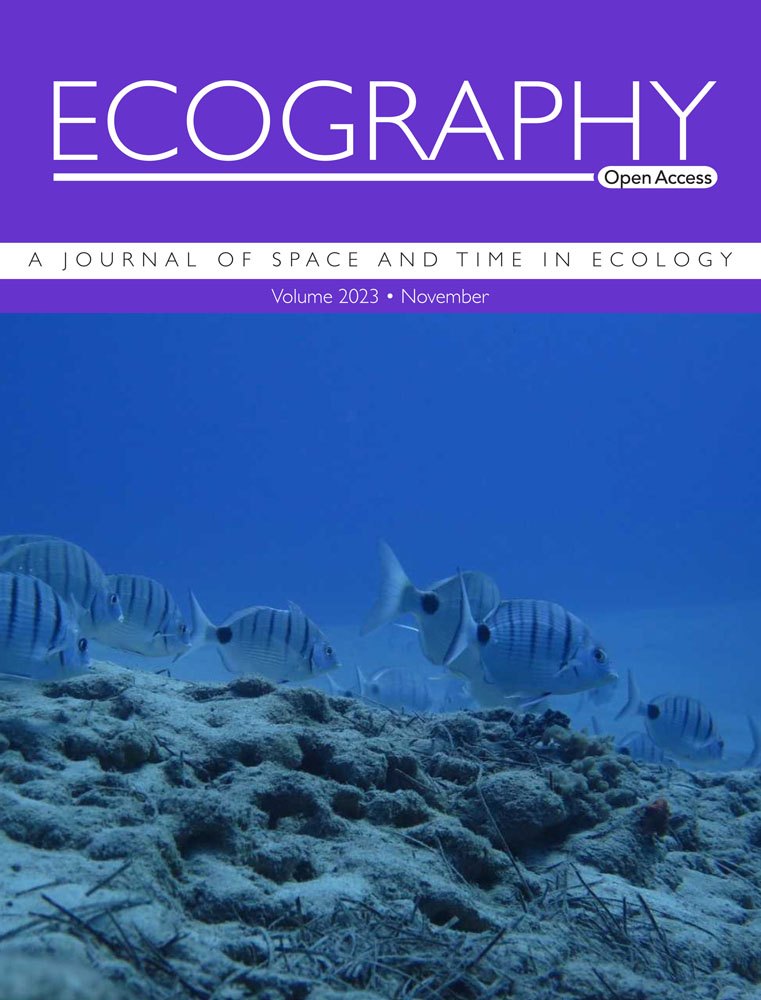Predicting global intraspecific trait variation of grasses
IF 5.4
1区 环境科学与生态学
Q1 BIODIVERSITY CONSERVATION
引用次数: 0
Abstract
Plant traits are important for understanding community assembly and ecosystem processes, yet our understanding of intraspecific trait variation (ITV) is limited. This gap in our knowledge is partially because collecting trait data across a species' entire range is impractical, let alone across the ranges of multiple species within a plant family. Using machine learning techniques to predict spatial ITV is an attractive and cost‐effective alternative to sampling across a species range, although this has not been applied beyond regional scales. We compiled a trait database of over 1000 grass species (family: Poaceae), encompassing six key functional traits: specific leaf area (SLA), leaf dry matter content (LDMC), plant height, leaf area, leaf nitrogen (Nmass) and leaf phosphorus content (Pmass). Using a random forest machine learning approach, we predicted local trait values within species' ranges considering climate, soil type, phylogeny, lifespan, and photosynthetic pathway as influential factors. An iterative random forest modeling technique incorporated correlations between traits, resulting in improved model performance (observed versus predicted R range of 0.72–0.91). Our models also highlight the importance of climate in predicting trait variation. For a subset of species (n = 860), we projected trait predictions across their known distribution, informed by expert maps from Royal Botanic Gardens, Kew, to create global maps of ITV for grasses. Such maps have the potential to inform conservation efforts and predictions of grazing and fire dynamics in grasslands worldwide. Overall, our research demonstrates the value and ecological applications of predicting plant traits.禾本科全球种内性状变异预测
植物性状对了解群落组成和生态系统过程具有重要意义,但我们对种内性状变异的认识有限。我们知识上的差距部分是因为在一个物种的整个范围内收集特征数据是不切实际的,更不用说在一个植物科的多个物种的范围内收集了。使用机器学习技术来预测空间ITV是一种有吸引力且具有成本效益的替代方法,可以跨物种范围取样,尽管这种方法尚未应用于区域尺度之外。摘要建立了1000余种禾本科植物的性状数据库,包括比叶面积(SLA)、叶干物质含量(LDMC)、株高、叶面积、叶氮(Nmass)和叶磷含量(Pmass)等6个关键功能性状。利用随机森林机器学习方法,考虑气候、土壤类型、系统发育、寿命和光合途径等影响因素,预测了物种范围内的局部性状值。迭代随机森林建模技术纳入了性状之间的相关性,从而提高了模型的性能(观察到的与预测的R范围为0.72-0.91)。我们的模型还强调了气候在预测性状变异方面的重要性。对于一个物种子集(n = 860),我们根据英国皇家植物园(Royal Botanic Gardens, Kew)的专家地图,预测了它们已知分布的性状预测,以创建草类ITV的全球地图。这样的地图有可能为保护工作提供信息,并预测全球草原的放牧和火灾动态。总的来说,我们的研究证明了植物性状预测的价值和生态应用。
本文章由计算机程序翻译,如有差异,请以英文原文为准。
求助全文
约1分钟内获得全文
求助全文
来源期刊

Ecography
环境科学-生态学
CiteScore
11.60
自引率
3.40%
发文量
122
审稿时长
8-16 weeks
期刊介绍:
ECOGRAPHY publishes exciting, novel, and important articles that significantly advance understanding of ecological or biodiversity patterns in space or time. Papers focusing on conservation or restoration are welcomed, provided they are anchored in ecological theory and convey a general message that goes beyond a single case study. We encourage papers that seek advancing the field through the development and testing of theory or methodology, or by proposing new tools for analysis or interpretation of ecological phenomena. Manuscripts are expected to address general principles in ecology, though they may do so using a specific model system if they adequately frame the problem relative to a generalized ecological question or problem.
Purely descriptive papers are considered only if breaking new ground and/or describing patterns seldom explored. Studies focused on a single species or single location are generally discouraged unless they make a significant contribution to advancing general theory or understanding of biodiversity patterns and processes. Manuscripts merely confirming or marginally extending results of previous work are unlikely to be considered in Ecography.
Papers are judged by virtue of their originality, appeal to general interest, and their contribution to new developments in studies of spatial and temporal ecological patterns. There are no biases with regard to taxon, biome, or biogeographical area.
 求助内容:
求助内容: 应助结果提醒方式:
应助结果提醒方式:


